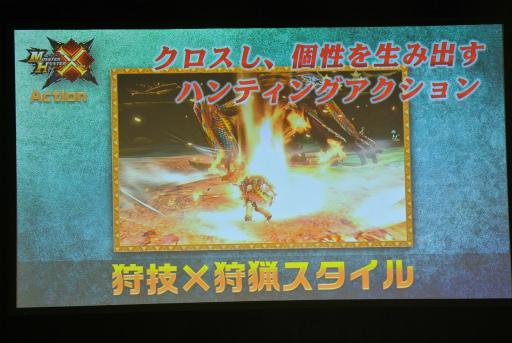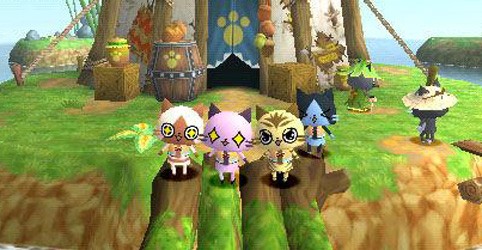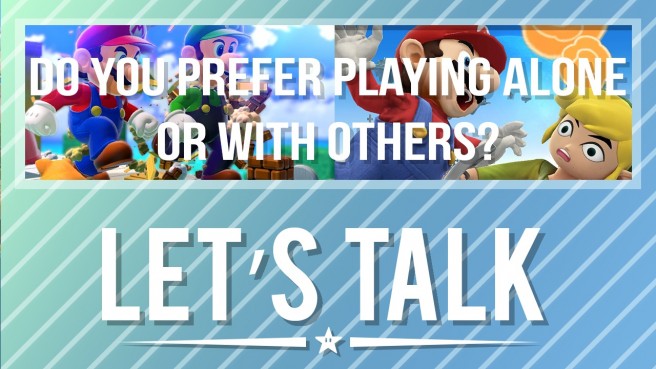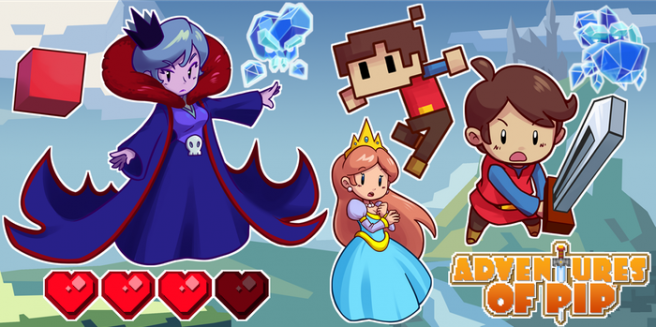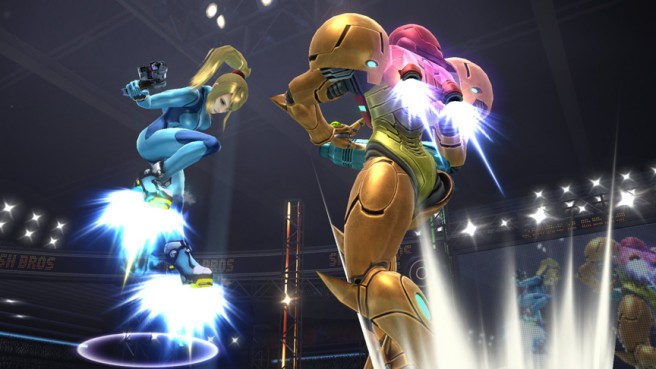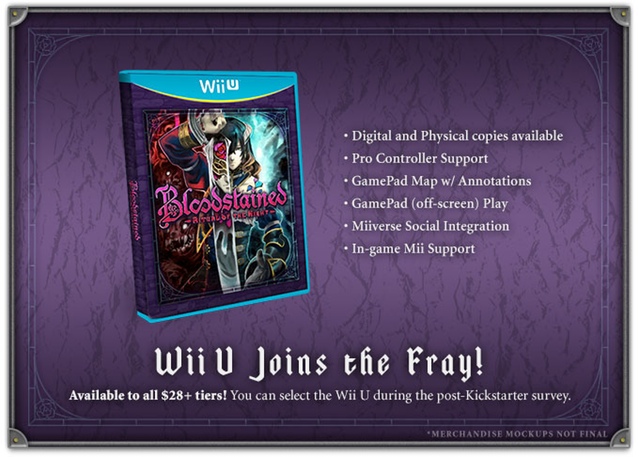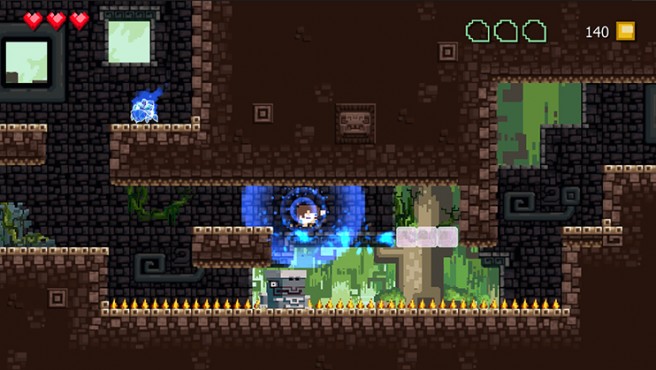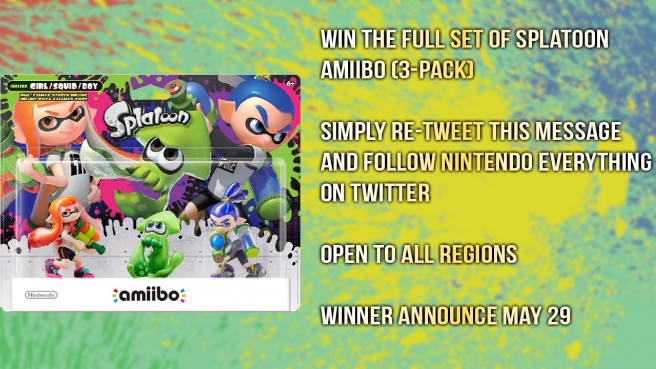Monster Hunter X also announced for 3DS
Posted on 10 years ago by Patrick(@Patricklous) in 3DS, 3DS eShop, News | 6 Comments
Capcom has announced not one, but two brand new Monster Hunter games at today’s “Hunter’s Meeting” in Japan. In addition to Monster Hunter Diary Poka Poka Airou Village DX, the company has also revealed “Monster Hunter X” for 3DS.
Monster Hunter X is built on the same engine as Monster Hunter 4. It’ll feature flashy action and puts the focus on the hunter. Fans can expect new super actions for all weapons (much more than just a few new moves), new monsters, and more.
Capcom says there will be classes with special attacks that you can activate as an accent to the action. Villages from the 1st, 2nd, and 3rd generations will return. Beruna is base village, which is set at base of massive mountain range.
Monster Hunter X features four styles of playing to choose from. Each one changes the special moves you can perform. There is a focus on the personalization of your hunting style.
Monster Hunter X will offer an increase in the actions in both variation and number. The title’s concept is to take the action and make it stylish/varied enough so that everyone can find their own unique way of playing.
Capcom is including four flagship monsters in Monster Hunter X. In terms of areas, there will be new places to explore. New monsters are being included in the game as well. There will be a total of four main monsters, four villages, and four styles of play.
Monster Hunter X launches in Japan this winter.
More: Capcom, Japan, Monster Hunter X, top
New Monster Hunter spinoff announced for 3DS
Posted on 10 years ago by Patrick(@Patricklous) in 3DS, 3DS eShop, News, Platforms | 2 Comments
In case the upcoming Monster Hunter Stories wasn’t enough, another spinoff of the Monster Hunter series is making its way to the 3DS. At today’s “Hunter’s Meeting” in Tokyo, Capcom announced a new game, Monster Hunter Diary Poka Poka Airou Village DX starring the cute and cuddly Felyne mascot characters.
From Software will be developing the game – they also handled the previous PSP entry in this spinoff series that puts a more relaxed, adorable spin on the usual hunting. Like Monster Hunter 4, it will have special collaboration costumes like Mario and Animal Crossing outfits.
Monster Hunter Diary Poka Poka Airou Village DX goes on sale on September 10th for 3990 yen.
[Just a Chat] Humble Nindie Bundle, Japanese Nintendo Direct
Posted on 10 years ago by Brian(@NE_Brian) in General Nintendo, Just a Chat, Videos | 1 Comment
This week’s Just a Chat puts the focus on two topics. Brian and Daan talk about the Humble Nindie Bundle, as well as the imminent Japanese Nintendo Direct.
Stuff:
[Let’s Talk] Do you prefer playing alone or with others?
Posted on 10 years ago by Brian(@NE_Brian) in General Nintendo, Let's Talk | 11 Comments
Let’s Talk #10: Do you prefer playing alone or with others?
There are two very different ways to play games. Way back in the day, is wasn’t as easy being able to play with a friend, but now that online play is being incorporated into more and more games, it’s become a very tangible option. Of course, quite a few games offer local multiplayer as well – notably titles made by Nintendo.
So what side of the fence do you site on? Are you more of a single-player gamer? Or do you prefer getting in your gaming fix by playing with others? Perhaps you sit somewhere in the middle. Do you have any memorable experiences playing alone or with friends with a particular game? Regardless of how you feel, be sure to let us know in the comments below!
I’ll kick off the discussion with my own thoughts.
Honestly, I’ve always been more about the single-player experience. I really enjoy getting immersed in a game, and the genres I enjoy the most are typically about playing alone. Platformers, adventure games, RPGs… those are right up my alley. Shooters, fighters, racers, party games, etc. focus more on multiplayer, and tend to be experiences that I’m not a huge fan of. That isn’t to say that these are defining rules. Super Mario 3D World, for example, does have a pretty big multiplayer component despite being a 3D platformer.
Even in multiplayer-centric games though, I’ve generally played through the single-player aspects much more than multiplayer. Take Smash Bros., for instance. Tons of people enjoy playing that title with friends, but I haven’t dabbled with the multiplayer much since Super Smash Bros. on the N64. The same even goes with something like Splatoon, which places the emphasis on online play. I see myself playing more via the campaign versus the multiplayer modes.
I do want to mention that I’m not against multiplayer gaming at all. Actually, it can be quite fun! Back when we did Game Nights with Mario Kart Wii and other titles, those were some pretty good times. It might be neat to bring that back one day.
Highlights from last week’s topic: What is your favorite Nintendo franchise?
Auragar
The Legend of Zelda. Best series. One of my top favorite series overall.
saltypop
This is tough. I’m going to go with Pikmin though. I’ve always loved the idea of exploring our world as a little person. And better yet they’re aliens so it’s all different to them. I love hearing what they have to say about our objects and fruits and even giving them new names, i.e. Strawberry is called “Sunseed Berry”. Oh and the gameplay is really fun.
Lolo
This is kind of personal, but my favorite series is the kirby series. Back in the early 90s, my dad was looking for game for me for my gameboy. Usually I would play mario games but he bought me kirbys dreamland for the gameboy. I looked at the game in disgust when I first saw it, so my dad played it first. I watched how much he sucked at the game, and I watched all the cute enemies walk into him, throw bombs in his face, until he died over and over and over. He let me play, and I enjoyed the game…it was different, and I felt the need to avenge my dad and beat the game. So I reached the end, and I finally meet the main bad guy of the game, King dedede. I honestly was puzzled as to why this Daffy Duck impersonator in robes with a hammer was the final boss. After fighting him, I was in awe at how he fights you like if he was another kirby, since he knew kirbys moves. I yelled in my room in shock when dedede sucked me in and spit me out, I yelled “HEY!! That’s what I do!”. I was especially shocked by how he could jump so high to hit kirby if you’re flying to get away. I had never seen a boss that acted like the hero…it was groundbreaking to me as a child. Since this game I was after my dad to get kirbys dreamland 2, and when he got it, I was very happy. I loved the animal buddies Rick, Coo, and Kine…and I wish for them to return someday. Dreamland 2 taught me, that not everything is what it seems. I honestly thought King dedede was at it again, and I never understood why he was sleepy when I fought him. I would beat the game countless times, puzzles at the one eyed black thing at the end of the credits, saying “that’s so stupid, why name all the characters, and then put a question mark for this one eyed black thing I have never seen”. To me it was stupid how the game ended that way. I never understood the deal behind the rainbow drops, but several years later when I was 9, I got them all. Then I faced king dedede again. I was officially scared when I beat dedede, because the game’s usual ending was changed. I watched the rainbow drops purify dedede from being possessed by the one eyed black thing that was always unnamed at the end of the game for me. It was then I realized, games can have an alternate true final boss and ending. This game was no longer cute, it was scary for me. But it made me realize that King dedede wasn’t always to blame for bad things to happen. It taught me that a character can’t always be labelled as a villain for just doing bad in 1 story. Which is why King dedede became my favorite character. He is funny bird that likes to be King, even if no one agrees that he should be. He surprised me as a child and made me laugh when I would race with him in gourmet race. Things like the gourmet race and the ending to kirbys adventure reminded me that even if someone does a bad thing, they aren’t always responsible for if something bad happens, and they are always capable of doing good.
Since my childhood, I have played though all the kirby games. I will conclude with this. A grew up with an older lady in my neighborhood, in recent years. Her grandaughter had a mother that along with her room mate, abused her. This granddaughter now lives happily with her grandmother I know. I introduced to them kirbys return to dreamland and they loved the game. This older lady, even though I am not related to Her, has taken me in like one of her children. Because if kirby I introduced to her, she loves play video games with her granddaughter. would you believe she has 100% on her own time games like snowpack park wii and animal crossing city folk? I was amazed. Together, we love kirbys return to dreamland (mario is too hard for her), because you can play as a team and its easier on the players than other games. She loves to play as King Dedede, and she loves to give enemies a “headache” with her hammer, I love that haha. She labels King dedede as “our buddy” because of how funny he is and how helpful he can be in the adventure.
If you don’t believe me, I have some videos of us playing. A 3 part kirby game of us 3 playing.
So this why I love the Kirby series and I eagerly await more of them. So I will conclude with this fan art I drew for my “grandmother”.
http://unclelaurence.deviantart.com/art/Kirby-and-his-friend-King-DeDeDe-365987290
FireFrog
I love almost every Nintendo franchise but the one that is my favorite and that I can always go back to its Yoshi. The Yoshi games are so calming imaginative and all around fun to play. They are great platforming games with tons of elements and mechanics that make it constantly enjoyable. Yoshi’s Story is actually my favorite in the series because of how crazy fun and innovative it is. I’m more excited for Woolly World than any other game right now.
shaw98
The main Super Mario series. Many people forget that Mario has a main series because of how many spin offs he has. I love all the main Mario titles except for Mario bros 2 both Japan and U.S.A. What I love about the mario franchise in general, is that even the spin offs are masterpieces. Usually spin offs are simple cash ins on the main series but Mario makes his spin offs so good to.
Update: Archive – Our Adventures of Pip stream is live
Posted on 10 years ago by Brian(@NE_Brian) in Videos, Wii U eShop | 0 comments
Update: Missed our stream from earlier today? No worries! The archived version is below.
Dennis has kicked off our Adventures of Pip live stream. You can watch it via the Twitch embed below.
The stream itself should last between 30-60 minutes. After it’s over, we’ll have an archived version up on YouTube. And again, if you end up liking the stream, let us know and we’ll try to arrange similar ones in the future!
More: Adventures of Pip, indie, TicToc Games, top
Unused text found in Smash Bros. Wii U relating to YouTube uploads
Posted on 10 years ago by Brian(@NE_Brian) in Wii U | 5 Comments
The Cutting Room Floor is known for its ability to unearth data and information from games that wouldn’t be accessible under normal circumstances. In the case of Super Smash Bros. for Wii U, the site has found several lines of unused text that points to an unused feature in which users could upload videos to YouTube.
Here’s the full lineup of text:
Convert the replay data into a video and post it? This requires a Google account.
(Note: This process may take longer than the duration of the replay.)
Cancel the conversion process?
Download?
Download complete. To see it, go to Í and then Í.
Download and save?
Replays you’ve downloaded can be found in the Vault.
By connecting to Nintendo Network, you can send your replay to friends or show it off to the world.
Whom do you want to share this with? Data will be sent to the following number of people: .
Is this OK?
Sent.
Mario Kart 8 lets players upload race highlights to YouTube, so I don’t see why Smash Bros. wouldn’t allow for the same thing. Is the text above from a scrapped feature? Or will the functionality be added in down the line via an update?
More: Super Smash Bros. for Wii U, top, YouTube
Bloodstained: Ritual of the Night’s Wii U version gets physical disc, feature ideas
Posted on 10 years ago by Brian(@NE_Brian) in News, Wii U | 22 Comments
Now that Bloodstained: Ritual of the Night has hit its Wii U stretch goal on Kickstarter, the team has opened up its campaign a bit more to Nintendo fans.
First, it’s possible to obtain a physical disc for Bloodstained’s Wii U version. Details can be found here.
Armature Studio, who will be handling the Wii U port, also shared information about the sort of features it hopes to implement. These include Pro Controller support, the ability to have the map on the GamePad while playing on the TV, drawing on/annotating the map, off-TV play, Miiverse integration, and an element in which you can have your Mii featured in the game.
Armature is also seeking feedback from fans. You can share input on the official Kickstarter page here.
Amazon listings confirm Skylanders SuperChargers, first details leaked
Posted on 10 years ago by Brian(@NE_Brian) in 3DS, News, Wii, Wii U | 3 Comments
Thanks to listings on Amazon, this year’s Skylanders entry has been confirmed as “Skylanders SuperChargers”. Recent rumors had suggested that the game would indeed be given that title.
Along with the final name, Amazon also reveals the first Skylanders SuperChargers details. First, check out the overview below:
Skylands is in peril! Kaos has unleashed his most evil weapon yet – the Doomstation of Ultimate Doomstruction. With all of Skylands on the verge of collapse, a special team called the SuperChargers has been assembled to pilot an unstoppable fleet of incredible vehicles. Now you and the SuperChargers must embark on epic adventures over land, under sea, and through the sky to stop Kaos and save Skylands!
The Skylanders SuperChargers Starter Pack will come with a copy of the game, new Portal of Power, two Skylanders SuperChargers, one Skylanders Vehicle, and collection poster.
Activision has not yet unveiled Skylanders SuperChargers, but an announcement should be imminent.
More: Activision, Skylanders Superchargers, top
Come check out our Adventures of Pip stream tomorrow
Posted on 10 years ago by Brian(@NE_Brian) in News, Wii U eShop | 2 Comments
Adventures of Pip launches on the North American Wii U eShop next Thursday. Dennis currently has the game downloaded, and he’ll be hosting a stream on our Twitch channel tomorrow for about 30-60 minutes.
This is a bit different for us since we haven’t done much with streaming in the past. Still, we thought it’d be an interesting thing to try out! If you end up enjoying it, let us know and we’ll try to arrange similar streams in the future.
You can watch the stream at 1 PM ET / 10 AM PT. A new post will be added to the site once it goes live, and we’ll archive the recording on YouTube a bit later for those who miss it.
More: Adventures of Pip, indie, TicToc Games, top
Update: Winners – [Giveaway] Splatoon amiibo 3-pack, Vector Assault
Posted on 10 years ago by Brian(@NE_Brian) in Giveaway | 15 Comments
Update: Our winners are in!
Splatoon: Lunar_Radiance
Vector Assault: Exy, LordDisco
Congratulations to all! Prizes will be sent out soon.
Our Nihilumbra giveaway officially ended today, but we’re definitely not done with giveaways as a whole. In fact, we’re now kicking off two new ones!
Over on Twitter, we’re giving away a Splatoon amiibo 3-pack. Just make sure you’re following us and re-tweet this post.
Right here on the site, we have two copies of Vector Assault to share. Leave a comment below telling us about your favorite dual stick shooter. Note that you’ll need a North American Wii U console in order to redeem the code.
Winners for both giveaways will be announced next Friday (May 29). Good luck!
